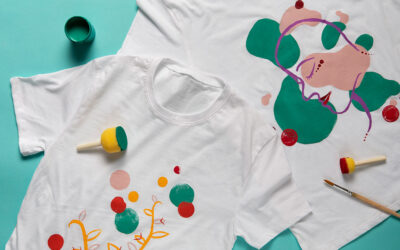Do your children keep pestering you about getting a pet? Do you worry about how your children may behave with this new household addition, and what’s involved in caring for pets?
Whether you currently own a pet or not, it’s essential to instil the value of caring for animals in children at an early age. Pets are living beings—and they deserve to be treated with respect, dignity, and care with no discrimination from their carer.
That said, the process of educating your child on the proper way to care for animals is fraught with several challenges.
For one, younger children may not comprehend the individuality of the pet and its unique needs—regarding them as no more than a plaything. Other children, during their emotionally charged moments, may lash out at the pet and cause harm to them.
However, when children are taught to care for pets with empathy and consistency, they can develop deep bonds and a genuine sense of responsibility—an ideal outcome for both child and pet.
You may be wondering, then, how do you go about teaching your kids to care for pets? Without further ado, let’s learn the importance of teaching kids about pet care.
Explain the pet’s needs
The first crucial lesson you must teach your child is the pet’s basic needs.
Dogs, cats, turtles, fish, rabbits, and other animals all have distinct needs that must be met to ensure their health and happiness. Furthermore, animals of the same species can also have individual health needs that must be addressed.
It’s important that your child is aware of your pet’s needs as early on as possible. Start by explaining the essentials to them: food, water, and exercise. Then, go into detail on how often they should provide these necessities to them.
Also, educate them on how to groom the pet. If they’re older, then teach them how to brush a furry pet’s fur and trim their nails. You should also highlight the pet’s emotional needs and desire for playtime and affection.
You should also educate your child on common body language and the outward behaviour of pets. This can help them identify signs of discomfort and discontent, inviting them to make adjustments to their own behaviours.
By explaining your pet’s needs to your children, they can develop the skills and empathy to care for these animals. This, in turn, can make them more responsible carers as they grow older—leading to a more harmonious household between the family and pets.
Lay out their responsibilities in caring for pets
Educating your child about how to care for a pet properly is one thing; actually, getting them to do the work consistently is a whole different story.
It’s not uncommon for children to laze about and not do what they’re told from time to time. But if they were the ones pushing to own a pet (and, let’s be real, even if they weren’t), then they should be involved in doing pet-related chores around the household consistently.
There are various pet-related tasks that you can assign your child to make them more responsible pet owners.
These tasks include filling up the food and water bowls at specific times a day, letting the pets go on a morning walk, cleaning up after them, grooming them, and—if they’re old enough—driving them for vet checkups.
As a parent, it’s important to clearly lay out your child’s pet responsibilities and have them develop the habit of caring for them sooner rather than later.
Assigning them responsibilities helps them gain a sense of structure and responsibility. When you’ve educated them about the pet’s needs beforehand, this sense of responsibility can be further cemented into their routine.
Teach how to gently handle pets
When helping teach your kids about pet care, it’s essential to help them learn how to handle the pet physically.
Pets can come in different shapes and sizes, and it’s important to respect the size differences of the pet and their comfort with physical touch. Big dogs, for instance, would not like to be picked up.
Some smaller pets, like small dogs and docile cats, on the other hand, can be gently picked up and supported. Your child may likely want to pick up and handle their pets at some point, too. This provides you with an excellent opportunity to teach them how to gently carry a pet the right way.
Start by showing them the correct technique when lifting a pet. They need to be gently lifted in a slow and calm manner to avoid startling the animal.
For dogs, they need to be supported in their bum area so that their whole body will be supported. If the pet shows signs of discomfort when being handled, then just put the pet down and try again another time once they’re more comfortable. Some pets may never want to get carried, and that’s okay—gentle petting and affection would do just fine.
It’s important to also teach your children the right way of petting. It needs to be soft and away from sensitive areas like near the animal’s mouth. Again, if there are signs of discomfort, then halt the activity.
As your children learn to interact with the dog, cat, or pet, they can feel more attached and hold a greater sense of stewardship over it, making them more responsible pet owners in turn. The pets will be happy, too, and the bond can effectively be fostered.
Encourage playtime with pets
Playtime is an essential activity to strengthen the bond between pet owner and pet. This not only provides enjoyment to both parties but also allows the pet to engage in physical and mental stimulation. This makes it a very important activity to incorporate into a family’s daily routine.
There are several ways you can encourage play with your pets.
One way is by using one of many pet toys from reputed pet retailers like Zach’s Pet Shop. If your pet enjoys fetch toys, for instance, you can have your child go to a dog park and pitch a couple of fetch toys for them to retrieve. If your pet enjoys plush or heartbeat toys, then you can get some of those for them as well.
In any case, it’s important to instil the value of playtime with pets with your child. Teach them that these pets are not playthings that can be forgotten about when bored; they need constant care and socialisation—and they are integral components for helping support that.
By teaching your kid to play with their pets regularly, they can both enjoy themselves and become more bonded with each other in turn.
Model kindness to pets
Children’s brains are like sponges, absorbing the world around them by watching people. The people they naturally observe the most are family, as they are their primary carers and the first people they interact with.
As such, it’s important to model kindness in every interaction you have with your pets. Gently handle them, show patience even when they’re being troublesome, and provide them with constant food and care. When your child sees you treat animals respectfully, they’ll be more likely to follow suit and uphold their needs as well.
Gently petting them or showing affection from time to time is great, but these actions are not enough to meet a pet’s needs. Encourage your child to express kindness through action—whether it be by offering them treats, brushing them, or simply spending time with them.
By showing that you care about your pet through actions, your child can naturally follow the habit. In turn, this can make the household environment more pet-friendly and positive for everyone.
Provide positive reinforcement
Another way to instil the habit of caring for pets in your child is by providing positive reinforcement to them.
Children like feeling praised for good behaviour, so whenever they complete a task like feeding, walking, or grooming their pet, then show your appreciation by acknowledging their efforts. This can help motivate them to perform their duties consistently.
You can also use this technique to slowly teach them to take on greater pet-related responsibilities. You can, for instance, reward them for watching over the pet when you and your partner are away overnight. You can also reward them whenever they do more strenuous tasks, like scooping pet waste, changing the litter box, or trimming their nails.
By showering your kids with positive reinforcement at the right time, you can build them up to be more responsible pet owners. This can make them feel a greater attachment to their pet and help them become more responsible pet owners overall.
Spanning Brisbane, Gold Coast, Sunshine Coast and beyond, Kids on the Coast is an online guide and printed free magazine for parents. With kids events and activities, attractions & things to do with kids, schools and education, school holiday guides, health & wellbeing for families, parenting and lifestyle news. Located on Gold Coast, Sunshine Coast & Brisbane, QLD.


